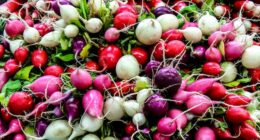Spread is made from oil-water mix, lower sat. fat, diverse flavors. Butter is creamy dairy, rich taste, higher fat. Culinary and nutritional contrasts.
TL;DR Spread Vs. Butter
Spreads are versatile toppings made from oils and water, easy to spread and often lower in saturated fat than butter. They come in various flavors, including plant-based options, catering to different dietary preferences.
Butter is a creamy dairy product with a rich taste and higher fat content, contributing to its texture and flavor. Butter is favored in baking for its flavor, while spreads can be suitable substitutes depending on the recipe and dietary requirements.
Spreads

Spreads are delectable toppings created by blending vegetable oils, water, or other ingredients. With diverse textures and flavors, they offer versatility for various occasions. Their lower saturated fat content, compared to butter, makes them appealing for health-conscious consumers.
Spreads, such as peanut butter or sun-dried tomato blends, can be enjoyed on bread, toast, or crackers straight from the refrigerator. Plant-based options cater to vegan diets and lactose intolerance. Their convenience, variety, and health benefits make spreads a delightful addition to culinary experiences.
Butters

Butters are creamy dairy products made by churning cream or fermented milk. With a rich and smooth texture, they’ve been kitchen staples for centuries, adding depth and flavor to dishes.
Composed mainly of cream and optional salt, butter offers a natural taste. Its higher fat content, ranging from 80% to 85%, contributes to a luxurious mouthfeel and enhances flavors in baking.
Butter provides benefits for brain function and hormone production. Whether spread on toast or used in cooking, butter’s versatility and distinct taste make it a cherished ingredient for both sweet and savory creations.
Spread Vs. Butter – Key differences
| Aspect | Spreads | Butter |
|---|---|---|
| Composition | Blend of oils, water, and other ingredients | Churned cream or fermented milk |
| Saturated Fat | Lower compared to butter | Higher, typically 80% to 85% fat content |
| Texture | Softer due to oil-water mix | Creamy and rich |
| Flavor Variety | Wide range of flavors and spices | Natural, rich taste |
| Health Considerations | Lower in saturated fat, suitable for some diets | Higher fat content, moderation advised |
| Baking Suitability | May not yield the same results as butter in baking | Preferred due to flavor and texture |
| Dietary Alternatives | Plant-based options available for vegan diets | Dairy-based, not suitable for lactose-intolerant individuals |
| Use in Culinary Creations | Versatile, great for spreads and toppings | Enhances flavors in various dishes |
Is butter better than spread for baking?
Butter is often preferred for baking due to its rich flavor, higher fat content, and natural emulsifiers that contribute to tender and flaky results. Its ability to create desirable textures in baked goods like pastries and cookies is well-known among bakers.
However, spreads can be used as substitutes in certain recipes, especially for those with dietary restrictions like vegans or individuals who are lactose intolerant.
Is margarine and spread the same?
No, margarine and spread are not the same, although they are related. Margarine is a type of spread, but not all spreads are margarine.
Margarine is a specific type of spread that was initially created as a butter substitute. It is traditionally made from vegetable oils and water, often with added emulsifiers and flavorings.
Spreads are a broader category that includes various products made from oils, water, and sometimes other ingredients. While margarine is a type of spread, spreads can also include products like fruit preserves, nut butters, and other creamy toppings.
Image Credits
Featured Image By – PublicDomainPictures from Pixabay
Image 1 By – vectorpocket on Freepik








